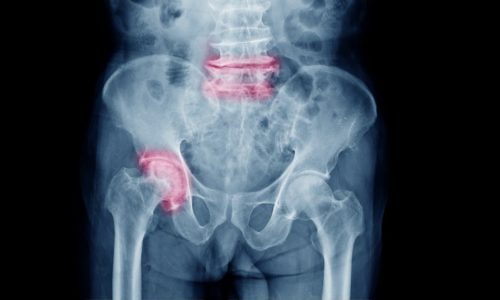What are the symptoms of carpal tunnel syndrome? |

The carpal tunnel is a narrow passageway in the wrist that the median nerve passes through. The median nerve provides sensation to the palm side of the thumb, index and middle fingers. It also carries nerve impulses to the muscles of these digits to bring about movement. Carpal tunnel syndrome (CTS) occurs when the median nerve becomes compressed or “pinched” in the carpal tunnel. In today’s Health Tip we’ll look at the causes for the development of CTS and how CTS is diagnosed. Next week’s discussion will be on the treatment and prevention of CTS.
What causes carpal tunnel syndrome?
Rather than being a disease of the nerve itself, CTS is caused by conditions that impinge on the median nerve. Someone with a congenitally narrowed carpal tunnel would be especially prone to developing CTS. Conditions that cause swelling of the tissue surrounding the canal with resulting narrowing can cause CTS also. These include injury, inflammation, repetitive activities of the hand and wrist, and arthritis.
What are the symptoms of carpal tunnel syndrome?
Symptoms associated with CTS include burning, tingling, or numbness in the thumb, index, and/or middle finger. Often, the symptoms first appear during the night, since many people sleep with bent a (flexed) wrist which functionally narrows the carpal tunnel. As CTS progresses people experience tingling during the day, especially with certain activities such as keyboarding or operating machinery. Decreased grip strength may make it difficult to form a fist, grasp small objects, or perform other manual tasks. In chronic and/or untreated cases, the muscles at the base of the thumb may waste away.
Who gets carpal tunnel syndrome?
For the most part, CTS is a disease that affects adults. Genetic factors which affect the structure of the hands and wrists have been shown to be more important in the development of CTS than repetitive hand use or other occupational factors. Women are three times more likely than men to develop the condition, perhaps due to having smaller carpal canals than men. Those with diabetes, rheumatoid arthritis and pregnant women are also at increased risk. CTS is especially common in those performing assembly line work such as sewing, finishing, cleaning, and meat packing. Although keyboarding is frequently blamed for causing CTS, one study found no increased risk of developing CTS among a group of individuals using their computers up to 7 hours per day.
How is Carpal Tunnel Syndrome diagnosed?
Awakening with hand numbness in the distribution of the median nerve is a hallmark of the disease. Activity-related wrist pain or numbness in the little finger is not. Activities that produce symptoms, such as holding a telephone or gripping a steering wheel also suggest the possibility of CTS. The physical exam can reveal important clues to the diagnosis also. Tapping on the median nerve at the wrist or bending the hand toward the wrist can sometimes reproduce the patient’s symptoms. In many cases, electrical testing of median nerve function is done to help confirm the diagnosis. Electrodiagnostic testing includes the electromyogram and nerve conduction velocity (NCV). When performing an electromyogram, needles are inserted into muscles to measure the electrical activity of these muscles at rest and during contraction. For the NCV, electrodes are placed on either side of the carpal tunnel. The speed of small shocks passed through the median nerve is then assessed. Slowing of the electrical impulse confirms the presence of CTS. In addition to confirming the diagnosis, electrodiagnostic studies can also help in determining the best treatment option.
Please note an error in last week’s Health Tip on breast cancer screening. In regard to the recommendations for screening in women age 50 to 75, the United States Preventive Medicine Task Force (USPMTF) currently recommends that mammograms be performed every 2 years. The statement that “The current evidence is insufficient to assess the balance of benefits and harms of screening” is the USPMTF position on screening women over the age of 75. Note that both the USPMTF as well as the American Cancer Society recommend the use of screening mammograms in this age group of women, although the recommended interval differs.
If you have any more questions just Ask Hanna, our health advisors are here to help.
Image: ©Shutterstock / siam.pukkato








